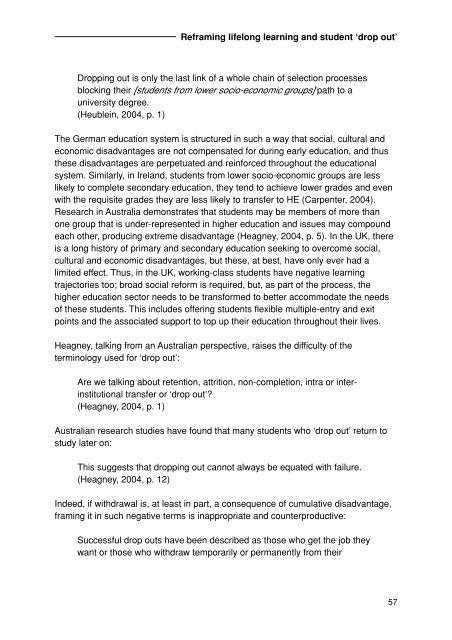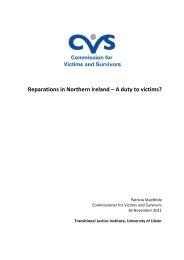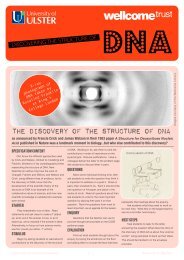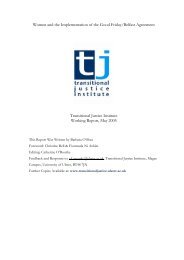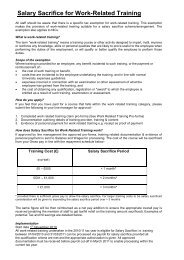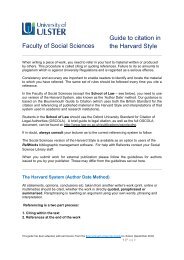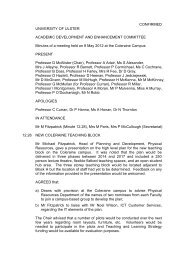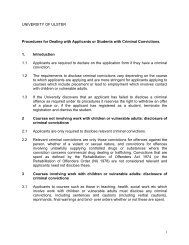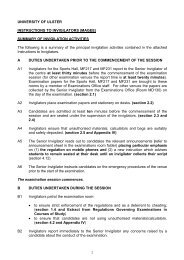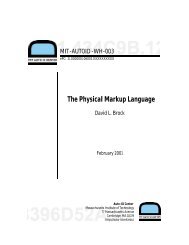From life crisis to lifelong learning: Rethinking working-class 'drop out'
From life crisis to lifelong learning: Rethinking working-class 'drop out'
From life crisis to lifelong learning: Rethinking working-class 'drop out'
You also want an ePaper? Increase the reach of your titles
YUMPU automatically turns print PDFs into web optimized ePapers that Google loves.
Reframing <strong>life</strong>long <strong>learning</strong> and student ‘drop out’<br />
Dropping out is only the last link of a whole chain of selection processes<br />
blocking their [students from lower socio-economic groups] path <strong>to</strong> a<br />
university degree.<br />
(Heublein, 2004, p. 1)<br />
The German education system is structured in such a way that social, cultural and<br />
economic disadvantages are not compensated for during early education, and thus<br />
these disadvantages are perpetuated and reinforced throughout the educational<br />
system. Similarly, in Ireland, students from lower socio-economic groups are less<br />
likely <strong>to</strong> complete secondary education, they tend <strong>to</strong> achieve lower grades and even<br />
with the requisite grades they are less likely <strong>to</strong> transfer <strong>to</strong> HE (Carpenter, 2004).<br />
Research in Australia demonstrates that students may be members of more than<br />
one group that is under-represented in higher education and issues may compound<br />
each other, producing extreme disadvantage (Heagney, 2004, p. 5). In the UK, there<br />
is a long his<strong>to</strong>ry of primary and secondary education seeking <strong>to</strong> overcome social,<br />
cultural and economic disadvantages, but these, at best, have only ever had a<br />
limited effect. Thus, in the UK, <strong>working</strong>-<strong>class</strong> students have negative <strong>learning</strong><br />
trajec<strong>to</strong>ries <strong>to</strong>o; broad social reform is required, but, as part of the process, the<br />
higher education sec<strong>to</strong>r needs <strong>to</strong> be transformed <strong>to</strong> better accommodate the needs<br />
of these students. This includes offering students flexible multiple-entry and exit<br />
points and the associated support <strong>to</strong> <strong>to</strong>p up their education throughout their lives.<br />
Heagney, talking from an Australian perspective, raises the difficulty of the<br />
terminology used for ‘drop out’:<br />
Are we talking about retention, attrition, non-completion, intra or interinstitutional<br />
transfer or ‘drop out’?<br />
(Heagney, 2004, p. 1)<br />
Australian research studies have found that many students who ‘drop out’ return <strong>to</strong><br />
study later on:<br />
This suggests that dropping out cannot always be equated with failure.<br />
(Heagney, 2004, p. 12)<br />
Indeed, if withdrawal is, at least in part, a consequence of cumulative disadvantage,<br />
framing it in such negative terms is inappropriate and counterproductive:<br />
Successful drop outs have been described as those who get the job they<br />
want or those who withdraw temporarily or permanently from their<br />
57


